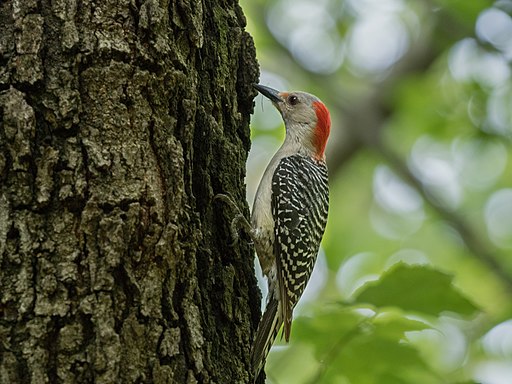Understanding Woodpeckers in Florida: Actions, Variety, and Environments
Understanding Woodpeckers in Florida: Actions, Variety, and Environments
Blog Article
Woodpeckers Unleashed: Exploring the Marvels of These Skilled Tree Mountain Climbers
Woodpeckers, with their distinct markings and rhythmic drumming echoing through wooded areas, hold an unique area in the bird world. Their specialized makeup and adaptations enable them to browse upright surfaces with unequaled skill. Their proficiency of tree climbing is simply one aspect of their remarkable behavior. As we look into the detailed details of woodpeckers' nesting habits, feeding methods, and the ongoing preservation efforts to protect these impressive birds, a much deeper appreciation for their place in nature unravels.
Makeup and Adaptations
When checking out the composition and adaptations of woodpeckers, one can observe impressive attributes that make it possible for these birds to grow in their specialized ecological niche. Additionally, woodpeckers have zygodactyl feet, with two toes encountering ahead and 2 encountering backwards, providing a company grip on tree trunks while they search for food or drum for interaction.
Additionally, woodpeckers have a distinct tongue framework that is long, barbed, and sticky, allowing them to draw out pests from holes in wood. This specific adjustment permits woodpeckers to manipulate a food resource that is hard to reach to many various other bird types. Overall, the makeup and adaptations of woodpeckers showcase the amazing transformative remedies that have enabled these birds to grow in their arboreal environment.
Drumming Actions
Having actually discovered the makeup and adaptations of woodpeckers, the emphasis now changes to comprehending their drumming habits, a distinct facet of their interaction and territorial screens. Drumming is an important kind of interaction among woodpeckers, serving numerous functions such as establishing regions, bring in friends, and signaling alarm system. Each woodpecker varieties has a special drumming pattern that assists people acknowledge participants of their own species and distinguish them from competitors or predators.
Woodpeckers produce drumming sounds by rapidly pecking on powerful surface areas such as dead trees, energy poles, or perhaps metal objects, producing a collection of rhythmic beats. The intensity and rate of drumming can vary based upon the objective; as an example, a fast drumming sequence might symbolize aggressiveness in the direction of burglars, while a slower and softer drumming pattern could show courtship (Woodpeckers in Florida). Furthermore, woodpeckers might change the regularity and duration of their drumming to check this site out share particular messages successfully
Nesting Habits
Exploring the nesting practices of woodpeckers reveals fascinating understandings right into their reproductive habits and environment choices. Woodpeckers are known for their unique nesting preferences, often digging deep into dental caries in trees to develop sheltered spaces for elevating their young. These tooth cavities serve not only as a nesting site however additionally as a secure haven from predators and stormy weather condition.
Woodpeckers display a high degree of integrity to their nesting websites, usually returning to the very same location year after year. This habits highlights the significance of appropriate habitat availability for their reproductive success. The option of a nesting website is crucial for woodpeckers, with variables such as tree species, height, and degeneration stage playing substantial duties in their decision-making process.
Interestingly, some woodpecker species are recognized to dig deep into numerous dental caries within their region, giving themselves with alternative nesting alternatives. Click Here This technique might work as a form of insurance against prospective hazards or disturbances to their main nesting site.

Feeding Methods
One of the most distinctive feeding habits of woodpeckers is drumming, which entails fast pecking on trees to discover bugs under the bark. Woodpeckers are likewise known to excavate cavities in trees to access concealed insect larvae or sap. Some species, like the acorn hop over to these guys woodpecker, store nuts in specially produced holes called granaries.
Conservation Efforts
Amidst the detailed feeding techniques showed by woodpeckers, the preservation initiatives aimed at safeguarding these remarkable birds play an essential role in protecting their habitats and populaces. Woodpeckers deal with numerous hazards to their survival, including habitat loss due to deforestation, climate adjustment altering their communities, and collisions with man-made structures such as structures and cars - Woodpeckers in Florida. Guardians are proactively working to resolve these obstacles and make certain the lasting well-being of woodpecker varieties

Education and learning and public recognition projects are likewise vital parts of woodpecker preservation efforts. By increasing recognition about the value of these birds in maintaining healthy woodland environments, guardians can amass support for environment conservation initiatives and advertise liable land management methods. Through collective initiatives between researchers, policymakers, and local neighborhoods, we can function together to safeguard a future where woodpeckers flourish in their all-natural environments.
Conclusion

Report this page